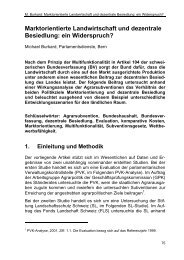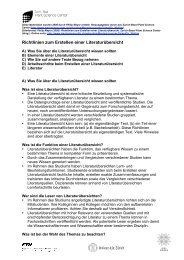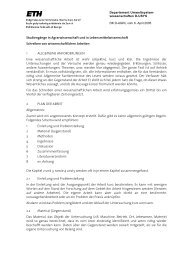Guidelines for writing a Review Article
Guidelines for writing a Review Article
Guidelines for writing a Review Article
Create successful ePaper yourself
Turn your PDF publications into a flip-book with our unique Google optimized e-Paper software.
FunctionNoteShows the readers the organisation of the text. Helps orientationamong sections.Some review journals print an outline/table of contents at thebeginning of the article, others do not. In general, these arerecommended <strong>for</strong> extensive narrative reviews.IntroductionFunctionElementsTenseCitationsLengthNoteProvides in<strong>for</strong>mation about the context, indicates the motivation <strong>for</strong>the review, defines the focus, the research question and explainsthe text structure.Elements of a three paragraph introduction (after Anonymous2003).1) Subject background. The general topic, issue, or area ofconcern is given to illustrate the context.2) “Problem”. Trends, new perspectives, gaps, conflicts, or asingle problem is indicated.3) Motivation/justification. The author’s reason <strong>for</strong> reviewing theliterature, the approach and the organisation of the text aredescribed.present (use past tense <strong>for</strong> the description of your methods andyour results)manyBetween 10% and 20% of the core text (introduction, body,conclusions).Make sure to have a narrow focus and an explicit researchquestion. Indicate these two points clearly in the introduction.Give theoretical or practical justifications <strong>for</strong> the need <strong>for</strong> a review.Body: Material and MethodsFunctionElementsSystematic and best evidence reviews have a methods section.This section enables motivated researches to repeat the review.Narrative reviews do not have a methods section but shouldinclude some in<strong>for</strong>mation about applied methods at the end of theintroduction.The material and methods section contains <strong>for</strong> examplein<strong>for</strong>mation about: data sources (e.g. bibliographic databases),search terms and search strategies, selection criteria(inclusion/exclusion of studies), the number of studies screenedand the number of studies included, statistical methods of metaanalysis.4






